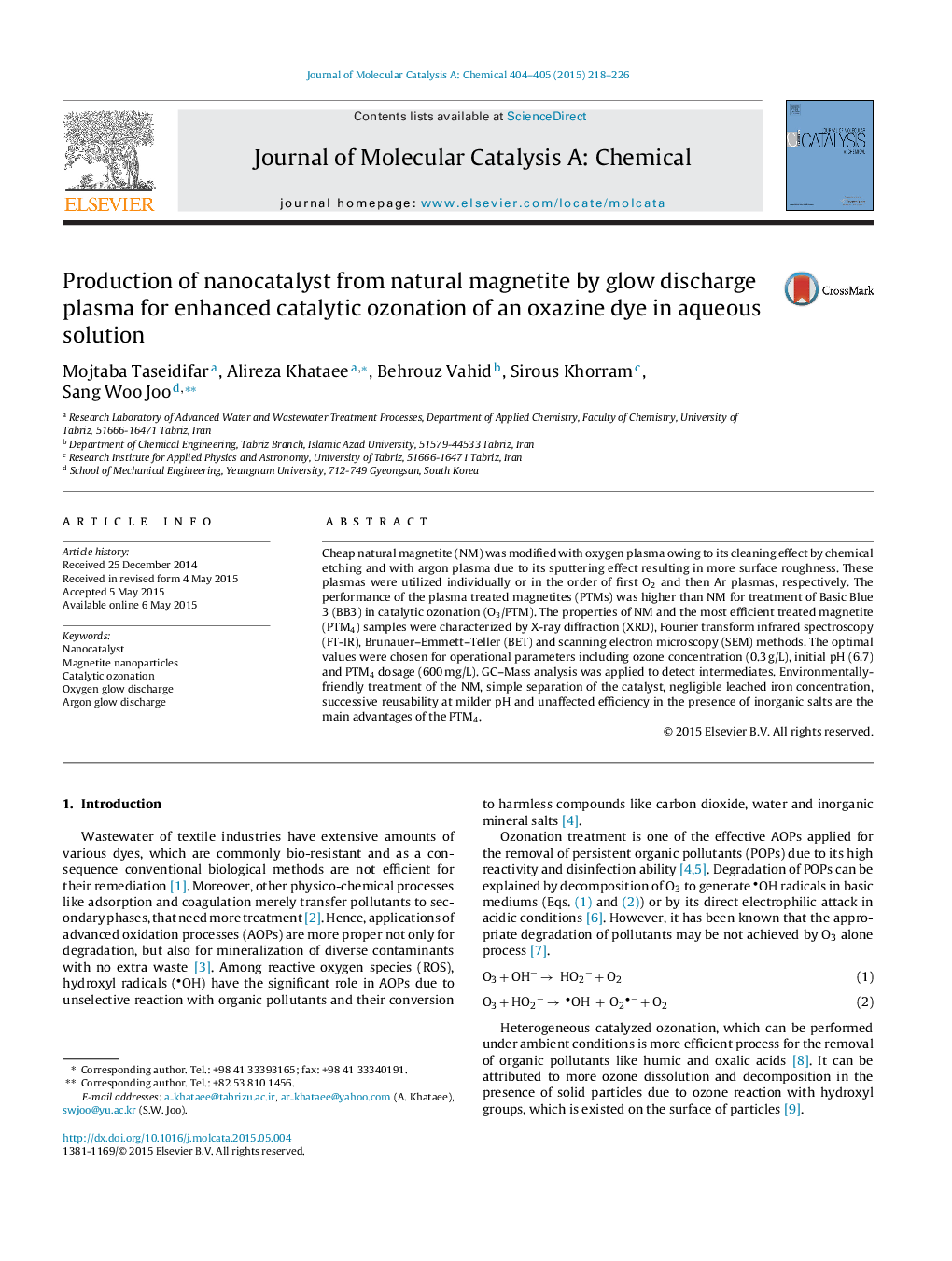| Article ID | Journal | Published Year | Pages | File Type |
|---|---|---|---|---|
| 64916 | Journal of Molecular Catalysis A: Chemical | 2015 | 9 Pages |
•Modification of natural magnetite by oxygen and argon glow discharge plasma.•Characterization of the plasma treated magnetite by XRD, FT-IR, SEM, BET and pHPZC.•Application of plasma treated magnetite in heterogeneous catalytic ozonation process.•Evaluation of effective parameters on heterogeneous ozonation process.
Cheap natural magnetite (NM) was modified with oxygen plasma owing to its cleaning effect by chemical etching and with argon plasma due to its sputtering effect resulting in more surface roughness. These plasmas were utilized individually or in the order of first O2 and then Ar plasmas, respectively. The performance of the plasma treated magnetites (PTMs) was higher than NM for treatment of Basic Blue 3 (BB3) in catalytic ozonation (O3/PTM). The properties of NM and the most efficient treated magnetite (PTM4) samples were characterized by X-ray diffraction (XRD), Fourier transform infrared spectroscopy (FT-IR), Brunauer–Emmett–Teller (BET) and scanning electron microscopy (SEM) methods. The optimal values were chosen for operational parameters including ozone concentration (0.3 g/L), initial pH (6.7) and PTM4 dosage (600 mg/L). GC–Mass analysis was applied to detect intermediates. Environmentally-friendly treatment of the NM, simple separation of the catalyst, negligible leached iron concentration, successive reusability at milder pH and unaffected efficiency in the presence of inorganic salts are the main advantages of the PTM4.
Graphical abstractProposed model for the interaction of glow discharge (O2–Ar) plasma and O3 with catalyst surface.Figure optionsDownload full-size imageDownload high-quality image (109 K)Download as PowerPoint slide
